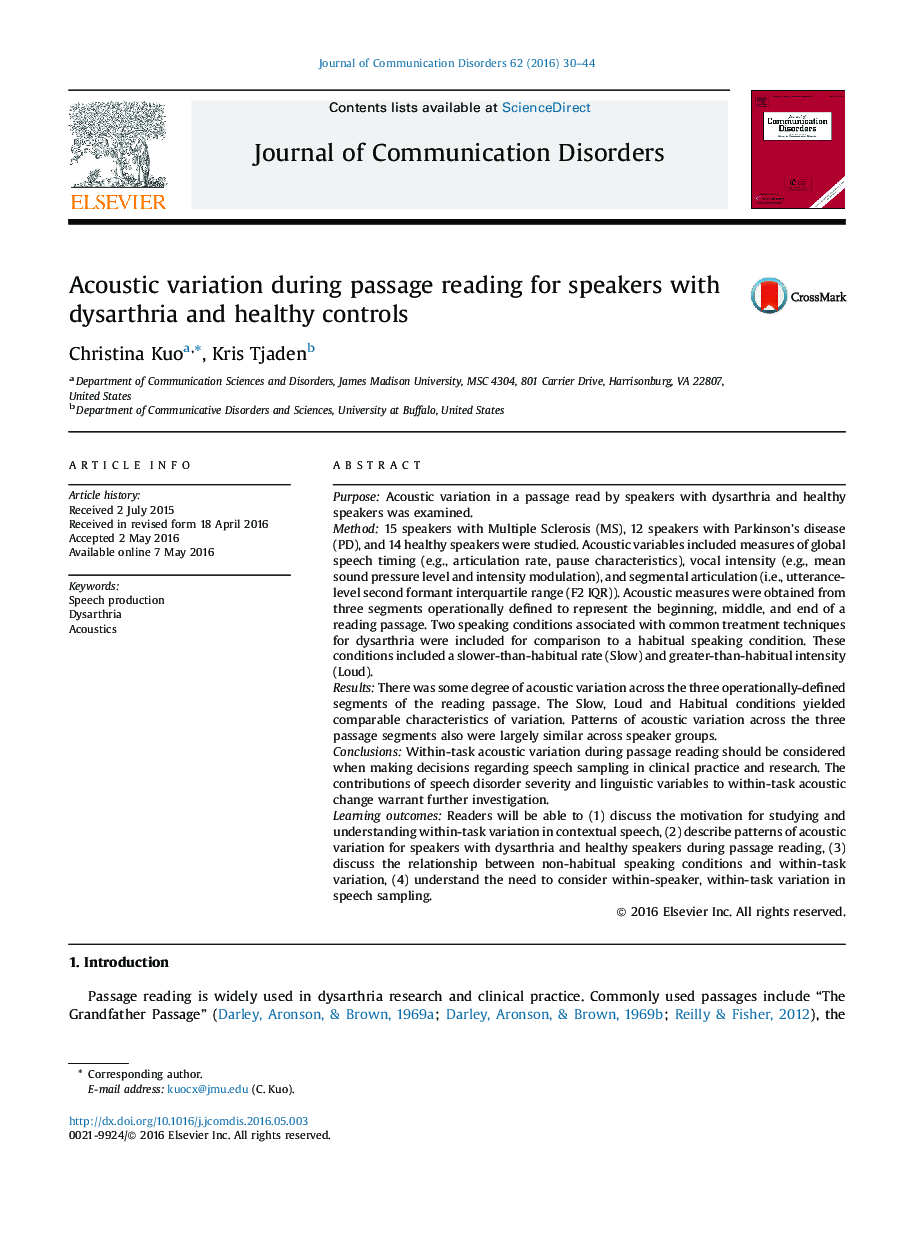| Article ID | Journal | Published Year | Pages | File Type |
|---|---|---|---|---|
| 910716 | Journal of Communication Disorders | 2016 | 15 Pages |
•Within-task variation should be considered when using contextual speech tasks.•Speakers with dysarthria share similarities in within-task acoustic variations during passage reading with healthy speakers.•Non-habitual speech styles do not appear to be associated with within-task variations that are significantly different from habitual speaking.
PurposeAcoustic variation in a passage read by speakers with dysarthria and healthy speakers was examined.Method15 speakers with Multiple Sclerosis (MS), 12 speakers with Parkinson’s disease (PD), and 14 healthy speakers were studied. Acoustic variables included measures of global speech timing (e.g., articulation rate, pause characteristics), vocal intensity (e.g., mean sound pressure level and intensity modulation), and segmental articulation (i.e., utterance-level second formant interquartile range (F2 IQR)). Acoustic measures were obtained from three segments operationally defined to represent the beginning, middle, and end of a reading passage. Two speaking conditions associated with common treatment techniques for dysarthria were included for comparison to a habitual speaking condition. These conditions included a slower-than-habitual rate (Slow) and greater-than-habitual intensity (Loud).ResultsThere was some degree of acoustic variation across the three operationally-defined segments of the reading passage. The Slow, Loud and Habitual conditions yielded comparable characteristics of variation. Patterns of acoustic variation across the three passage segments also were largely similar across speaker groups.ConclusionsWithin-task acoustic variation during passage reading should be considered when making decisions regarding speech sampling in clinical practice and research. The contributions of speech disorder severity and linguistic variables to within-task acoustic change warrant further investigation.Learning outcomesReaders will be able to (1) discuss the motivation for studying and understanding within-task variation in contextual speech, (2) describe patterns of acoustic variation for speakers with dysarthria and healthy speakers during passage reading, (3) discuss the relationship between non-habitual speaking conditions and within-task variation, (4) understand the need to consider within-speaker, within-task variation in speech sampling.
